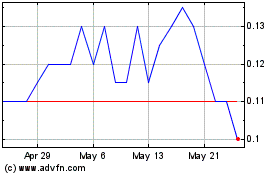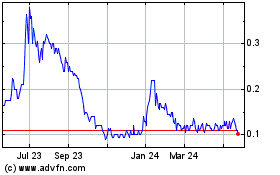DPM Exploration Confirms Extension of Limestone Hosted Gold Mineralization, Serbia
02 October 2008 - 7:03AM
Marketwired Canada
Dundee Precious Metals Inc. (TSX:DPM)(TSX:DPM.WT) (the "Company" or "DPM")
announced that exploration along the western margin of the Timok Magmatic
Complex ("TMC") in northeastern Serbia has confirmed the limestone hosted belt
of gold mineralization extends more than 25 km.
HIGHLIGHTS
- Initial excavation and sampling of trenches, using a notional trench spacing
of 800m, along the strike extent of the target zone has confirmed significant
gold mineralization over the entire 25 km length sampled to date.
- All identified anomalous areas have returned gold mineralized intercepts,
using a cut off grade of 0.5g/t Au.
- In addition, broad zones of strongly anomalous gold mineralization have been
outlined, using a notional 0.1g/t Au 'geological' cut off grade.
- Gold mineralization is associated with deformed and silicified limestones,
marbles and skarns, intruded by andesites and monzonites.
- Key trench gold intercepts include the following (from North to South):
Korkan
-- JASTR009 45m at 3.0g/t from 0m
-- JASTR009 37m at 3.9g/t from 86m
Bigar
-- BITR001 6m at 2.9g/t from 164m
-- BITR001 24m at 1.0g/t from 376m
-- BITR002 12m at 1.1g/t from 66m
-- BITR002 12m at 2.8g/t from 88m
-- BITR002 36m at 1.1g/t from 108m
Kraku Pester
-- PETR002 18m at 1.8g/t from 0m
-- PETR002 28m at 3.0g/t from 26m
Umka
-- PCTTR010 11m at 1.9g/t from 193m
-- UMTR011 10m at 1.5g/t from 212m
-- UMTR012 6m at 1.8g/t from 174m
- The gold mineralized zone is open in both directions and DPM has secured
exploration licences to cover all prospective parts of the limestone sequence
along the western margin of the TMC.
- Exploration will continue to further determine the controls on gold
mineralization and to generate drill targets.
- In addition, final gold assays have been received from the remainder of the
'proof of concept' drilling program from the limestone hosted gold Bozuluj
Prospect in the Tilva Njagra Concession Licence and highlights include the
following:
-- BZDD008 12m at 1.3g/t from 54m
-- BZDD009 17m at 0.7g/t from 0m
-- BZDD010 7.4m at 1.2g/t from 6.6m
-- BZDD012 12m at 1.1g/t from 36m
-- BZDD014 18m at 3.2g/t from 167m
BACKGROUND
Following the successful 'proof of concept' exploration results on the limestone
hosted gold target at Bozuluj, a program of detailed geological mapping and
trench sampling has been carried out along the 25 km length of soil sampling
anomalies within the Potoj Cuka and Jasikovo exploration licenses within the
TMC. The location of the two licenses is displayed in Figure 1.
Geological mapping of the 'limestone hosted' gold belt has determined a complex
geological and structural sequence of limestone, marble, skarn, monzonite,
diorite dykes, andesite, schist and sediments. Further work is required to
determine, in more detail, the structural and lithological controls on the gold
mineralization.
The initial program of 'scout' trenching has used a notional 800m spacing
between trenches within the four main anomalous areas (from north to south as
follows): Korkan, Bigar, Kraku Pester and Umka. Figure 2 displays the location
of the key prospects with the background image of Au-Ag-As-Sb-Hg correlation
from the soil sampling data. The figure also summarizes the geological
association at each prospect.
For the majority of the trench sampling program a two metre sample interval has
been used and the samples have been prepared at the SGS managed laboratory
facility at Bor, eastern Serbia and have been assayed at the SGS managed
laboratory at Chelopech in Bulgaria. Following DPM exploration standard
procedures, a full suite of field and laboratory duplicates and replicates along
with internationally accredited standards have been submitted with each batch of
samples. A one metre sampling interval has been used for the Bozuluj 'proof of
concept' diamond drilling program. Composite samples for metallurgical testing
have been collected and compiled from the Bozuluj core and have been dispatched
to SGS Lakefield, Toronto, Canada for first pass metallurgical testing. Results
from the metallurgical test work are awaited.
RESULTS
The initial trench sampling program has been extremely successful, with gold
mineralization being encountered in almost all trenches excavated to date.
Table 1 highlights key intercepts from the trench sampling program, using a cut
off grade of 0.5g/t Au, whilst Table 2 displays selected intercepts using a
'geological' cut off grade of 0.1g/t Au in order to illustrate the frequent
broad zones of anomalous gold that surround the mineralized intervals using a
0.5g/t Au cut off.
Table 3 summarizes the results of the 'proof of concept' drilling program at
Bozuluj, with intersections calculated using a cut off grade of 0.5g/t Au, a
minimum intersection length of 5m and a maximum contiguous interval of waste of
5m. Note that holes BZDD001 to BZDD007 have previously been reported but are
included in Table 3 for completeness. The 'proof of concept' program is
considered to have been very successful as numerous encouraging intersections
have been returned, given the wide spacing of the first pass drilling program.
It is of note that several of the trenches began or ended in mineralization,
including BITR002, BITR004 and BITR010 at the Bigar prospect, PETR001, PETR002
and PETR005 at Kraku Pester and JASTR009 at Korkan.
Geological mapping has indicated that the mineralization is structurally
controlled and is dominantly hosted within strongly altered limestone, marble
and skarn which are spatially associated with intrusive rocks including
monzonite, diorite dykes and andesite bodies. Further mapping and structural
studies, coupled with re-interpretation of the extensive geophysical data that
has been collected is required to further delineate the controls on
mineralization prior to targeting further drilling. Infill trenching is also
required to refine the numerous targets that have been identified to date.
Stream sediment sampling (both 'traditional' stream sediments samples and bulk
leachable gold, or 'BLEG' samples) have been collected from the remaining
exploration licences which have been staked to cover the remainder of the
prospective geological trend. The stream sediment samples have been dispatched
for multi-element analysis by inductively coupled plasma (ICP-MS) techniques
using equipment at the ALS Chemex laboratory, Perth, Australia. The 'BLEG'
samples have been sent to SGS Welshpool, Perth, Australia for leach analysis by
method BLL62N. Soil sampling has also been initiated to extend coverage to the
north and west of the Korkan prospect at the northern end of the currently
identified anomalous zone.
The exploration to date has confirmed the existence of a greater than 25 km long
zone of strongly anomalous gold mineralization. Much further work is required to
begin to develop both a model of the controls and location of the gold
mineralization in this newly discovered belt and to refine targets for follow up
drilling. Nevertheless it is clearly evident that a new gold mineralized
province has been outlined along the western margin of the TMC.
Dr. Julian F. H. Barnes, a qualified person under NI 43-101 and Executive Vice
President of DPM, has supervised the preparation of the technical data included
in this press release.
Dundee Precious Metals Inc. is a Canadian based, international mining company
engaged in the acquisition, exploration, development and mining of precious
metals. It currently owns the Chelopech Mine, a producing gold/copper mine, and
the Krumovgrad Gold Project, a mining development project, both located in
Bulgaria, and is engaged in mineral exploration activities in Serbia. In
addition, Dundee Precious owns the Back River gold exploration project in
Nunavut, Canada and a 95% interest in the Kapan Mine in Armenia.
FORWARD LOOKING STATEMENTS
This news release may contain certain information that constitutes
forward-looking statements. Forward-looking statements are frequently
characterized by words such as "plan," "expect," "project," "intend," "believe,"
"anticipate" and other similar words, or statements that certain events or
conditions "may" or "will" occur. Forward-looking statements are based on the
opinions and estimates of management at the date the statements are made, and
are subject to a variety of risks and uncertainties and other factors that could
cause actual events or results to differ materially from those projected in the
forward-looking statements. These factors include the inherent risks involved in
the exploration and development of mineral properties, the uncertainties
involved in interpreting drilling results and other geological data, fluctuating
metal prices and other factors described above and in the Company's most recent
annual information form under the heading "Risk Factors" which has been filed
electronically by means of the Canadian Securities Administrators' website
located at www.sedar.com. The Company disclaims any obligation to update or
revise any forward-looking statements if circumstances or management's estimates
or opinions should change. The reader is cautioned not to place undue reliance
on forward-looking statements.
To view "Figure 1: Location of Potoj Cuka and Jasikovo exploration licenses
within the Timok Magmatic Complex," please visit the link below:
http://media3.marketwire.com/docs/dunfig1.pdf
To view "Figure 2: Location of key prospects," please visit the link below:
http://media3.marketwire.com/docs/dunfig2.pdf
To view "Table 1," please visit the link below:
http://media3.marketwire.com/docs/dunt1.pdf
To view "Table 2," please visit the link below:
http://media3.marketwire.com/docs/dunt2.pdf
To view "Table 3," please visit the link below:
http://media3.marketwire.com/docs/dunt3.pdf
Trench Metals (TSXV:TMC)
Historical Stock Chart
From May 2024 to Jun 2024

Trench Metals (TSXV:TMC)
Historical Stock Chart
From Jun 2023 to Jun 2024
